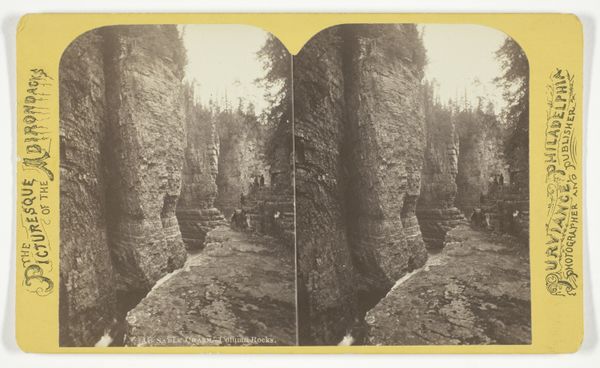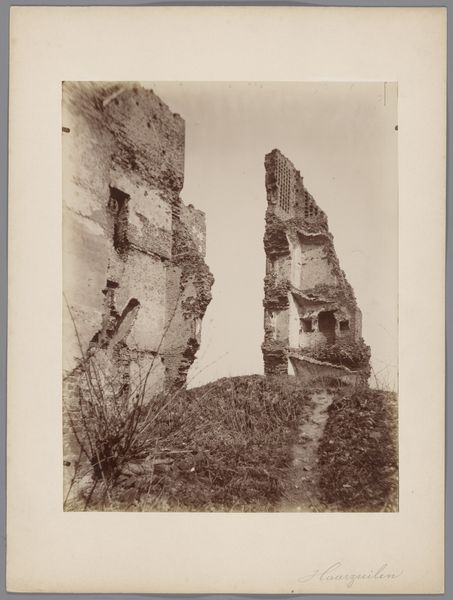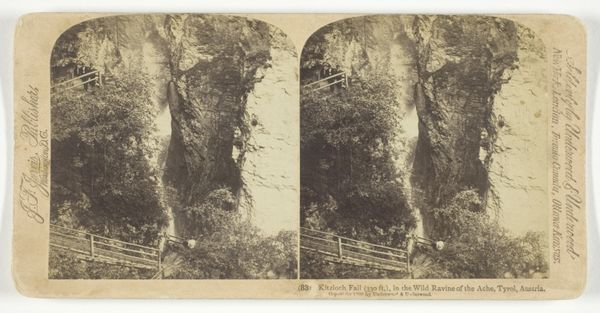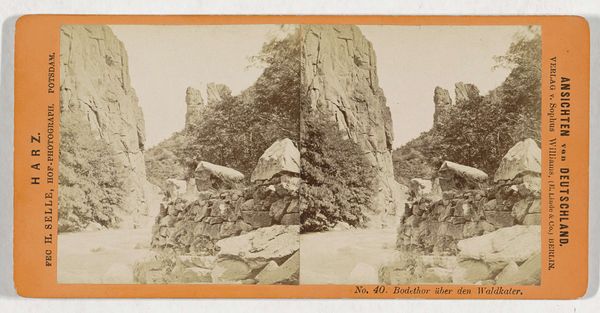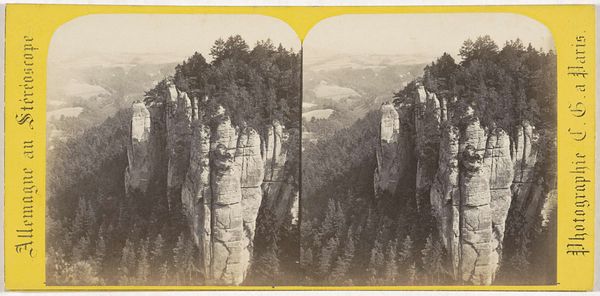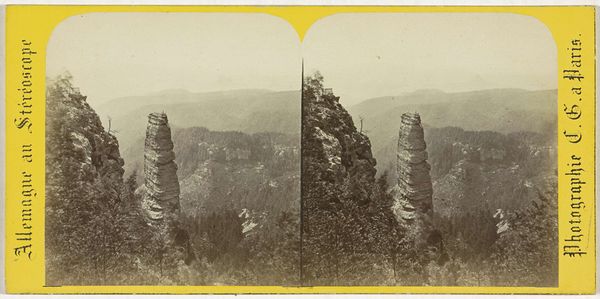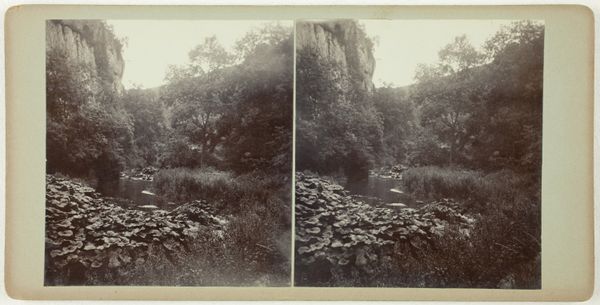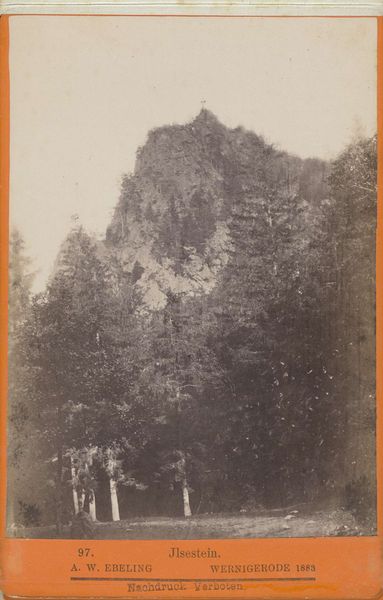
Dimensions: 10.3 × 7.3 cm (each image); 11 × 17.8 cm (card)
Copyright: Public Domain
Editor: This is R.M. McIntosh’s "Shady Gorge" from the late 19th century, a photograph presented as a stereoscopic print. The two images side-by-side create an almost uncanny 3D effect. It really emphasizes the sheer scale and depth of the gorge itself, making me feel almost claustrophobic. What stands out to you about the composition of this piece? Curator: Indeed. Observe how McIntosh frames the scene. The verticality of the gorge walls dominates, creating a powerful sense of enclosure. The dark tonality contributes to this feeling, obscuring details and flattening the space. The almost symmetrical placement of the two rock faces further reinforces the structure. Do you notice the limited tonal range? Editor: Yes, it’s mostly grayscale, which makes the texture of the rock more prominent. It seems to simplify the image. Is that typical of landscape photography of the time? Curator: Partially. The absence of color pushes us to engage with form and texture, as well as the quality of light, rather than relying on color to convey the landscape. Look at how the light glances off the rocks creating subtle variations and defining their jagged nature. Consider the print’s surface, too. What might the materiality of photography contribute to the artwork's effect? Editor: I guess the flat surface of the print contrasts the 3D illusion we get with the two combined photographs. The rough textures of the gorge also become flatter than in real life, giving them this stylized pictorial quality. Curator: Precisely. The print, with its smooth surface and monochromatic palette, acts as a mediator between the viewer and the depicted scene. Pictorialism saw the beauty of a composition and the photographic manipulation techniques as an act of artmaking. Have you considered what happens to an idea like "nature" when you consider it being re-presented like this? Editor: That's a really good point. Thanks for making me look at how the artist plays with our expectations in their composition. I never considered that this was an intervention in how we imagine nature as a pure or even 'untouched' subject, when the image is clearly mediated through these techniques. Curator: Of course. By analyzing these qualities we move beyond representation and into the artistic decisions that construct it.
Comments
No comments
Be the first to comment and join the conversation on the ultimate creative platform.
